Dog Stinkhorn
This mushroom is fairly common but can be hard to spot as it is quite small and among leaf litter The eggs are eaten in some countries but there are reports of dogs becoming ill after consumption of mature Dog Stinkhorns so we think of them as inedible.
| Mushroom Type | |
| Common Names | Dog Stinkhorn (EN), Cingroen Bengoch (CY), Mądziak Psi (PL), Közönséges Kutyaszömörcsög (HU) |
| Scientific Name | Mutinus caninus |
| Synonyms | Phallus caninus, |
| Season Start | Jul |
| Season End | Oct |
| Average Mushroom height (CM) | 8-15cm |
| Average Cap width (CM) | 1-1.5cm |
Fruiting Body
The mushroom starts as small white semi submerged ‘egg’ before the fruiting body grows from it, see main image above. The ‘head’ or gleba, pictured, is a wet mass of grey spores that flies are attracted to due to it’s rancid smell. After the spores are gone, it leaves an orange cone with tiny bumps on it.
Stem
Not really a true stem, it looks like polystyrene and is off white to pale yellow to pale orange. It can hardly stand straight due to it’s flimsy nature and the Dog Stinkhorn can often be found sagging and stooped over by its own weight.
Volva
The fruiting body emerges from a white ‘egg’ about 2-3cm wide with mycelial cords at the base. Under the outer skin is a layer of slime like material surrounding the fruiting body before it emerges. Once the fruiting body has emerged, the egg looks like volval remains.
Flesh
The fruiting body is hollow with polystyrene like walls that are off white to pale orange underneath the orange/brown head.
Habitat
Growing from the soil among leaf litter in woods but can be found in piles of woodchips or garden mulch.
Possible Confusion
Possibly Phallus rubicundus or Mutinus ravenelii but both of these have much more red ‘stems’, less off white to orange like the Mutinus caninus.
The Stinkhorn (Phallus impudicus), pictured, can look similar but is a much larger mushroom
Frequency
Fairly common.
Spores
Pale yellow. Ellipsoid.
Other Facts
The Stinkhorns have a gleba that is a wet mass of spores. These often smell of rotting meat or other rancid smells and attract flies. The spores become attached to the flies feet and are spread, hopefully to an area suitable for growth and mixed with spores from other Stinkhorns of the same species. It is quite like the method employed by some flowering plants.


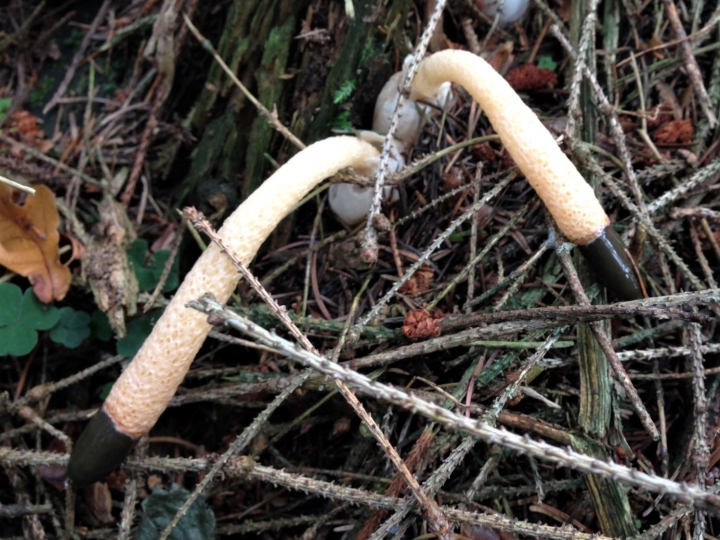
















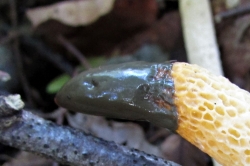
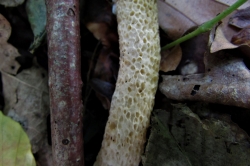
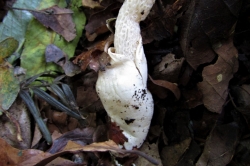
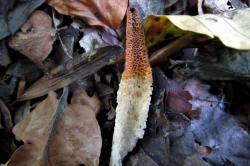
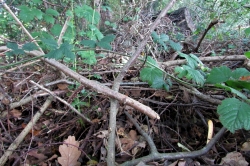
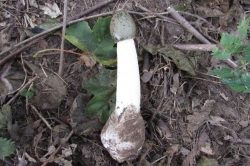





COMMENTS